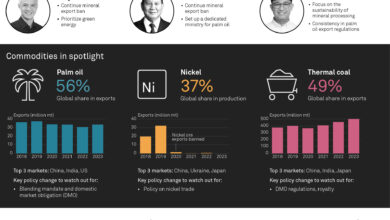Morgan Stanley sees brent crude prices hitting $90/barrel this summer

Global brokerage house Morgan Stanley sees brent crude oil prices hitting $90 per barrel this summer. The brokerage has revised its Brent oil price projections upward by $10 per barrel to $90 for the third quarter of 2024. This adjustment is attributed to tighter supply and demand dynamics resulting from OPEC+ commitments and Russia’s decision to curtail oil production following recent drone attacks on its refineries.
Additionally, the brokerage has also revised its brent price forecasts for various quarters. The first-quarter outlook has been raised to $85 per barrel from $82.5, while the second-quarter forecast now stands at $87.5, up from $82.5. Moreover, for the fourth quarter, the bank anticipates prices to reach $85, compared to the previous projection of $80.
International crude oil prices again hit a four-month-high mark on Tuesday, March 19, after breaking above range-bound trading last week, but gains were limited by the prospect of rising exports from Russia as Ukrainian attacks on oil infrastructure curb domestic refining activity. The Brent crude oil futures contract was up 33 cents at $87.22 per barrel while US West Texas Intermediate (WTI) prices were up 31 cents at $82.47.
Why MS sees brent at $90/barrel?
In recent months, the prevailing sentiment in the oil market has been that while demand continues to increase, the pace has significantly slowed following the post-Covid recovery. Concurrently, non-OPEC production, including from sources like US shale, Brazil, Guyana, and Canada, remains robust. These factors largely balance each other out, with non-OPEC supply growth expected to potentially surpass global demand growth. Consequently, there appears to be limited space in the market for additional OPEC oil, noted the brokerage.
But, it pointed out that lately, the oil market sentiment suggests that while demand is rising, the pace has slowed after the post-Covid rebound. Meanwhile, strong non-OPEC production from sources like US shale, Brazil, Guyana, and Canada is keeping pace. This balance suggests that non-OPEC supply growth might outstrip global demand growth, leaving little room for additional OPEC oil, MS said.
However, MS cautioned that relying too heavily on this outlook can pose challenges. Firstly, history suggests that it may take a considerable amount of time for OPEC to change its course, possibly spanning years. Secondly, despite any surplus OPEC spare capacity, there exists an optimal oil price level, and market sentiment can become overly bearish during price discovery. Additionally, supply and demand dynamics fluctuate over shorter periods, with incoming data sometimes surpassing expectations.
Currently, the oil market seems to be experiencing one such period. Initially, market participants had cautious supply/demand outlooks for the year, it noted, but data from January and February has been somewhat better than anticipated, supporting expectations for reasonable inventory draws over the second and third quarters, it further mentioned.
This improvement in fundamentals should bolster oil prices, albeit the extent remains uncertain. Forecasting a flat price based on the supply/demand balance is complex. In this context, we outline our methodology, leveraging enduring relationships to build a model. As a result, our current supply/demand outlook suggests a brent price of approximately $90 per barrel this summer, predicted the brokerage.
Morgan Stanley suggests that rather than factoring in a geopolitical risk premium, the Brent price currently reflects a slight discount due to concerns about OPEC cohesion. They emphasize that as long as OPEC maintains discipline, the Brent flat price is likely to align with existing inventory levels and time spreads over time.
Production forecasts
MS has also adjusted its projections, now estimating a full-year demand growth of 1.5 mb/d for 2024, up from 1.3 mb/d. This revision is primarily influenced by a more positive outlook for jet fuel demand. However, it has also revised its forecast for non-OPEC production growth from 1.7 mb/d to 1.5 mb/d due to slower-than-expected performance in the US, Brazil, and Canada at the start of the year. As a result, its projection for the call-on-OPEC has stabilized, representing an improvement from previous estimates indicating a decline.
Morgan Stanley has also lowered its supply forecast for OPEC and Russia by 0.2-0.3 million barrel per day (bpd) for 2Q/3Q as it sees a modest deficit in the second quarter, increasing to a larger deficit in the third quarter.
Disclaimer: The views and recommendations made above are those of individual analysts or broking companies, and not of Mint. We advise investors to check with certified experts before taking any investment decision. (edited)
Unlock a world of Benefits! From insightful newsletters to real-time stock tracking, breaking news and a personalized newsfeed – it’s all here, just a click away! Login Now!





